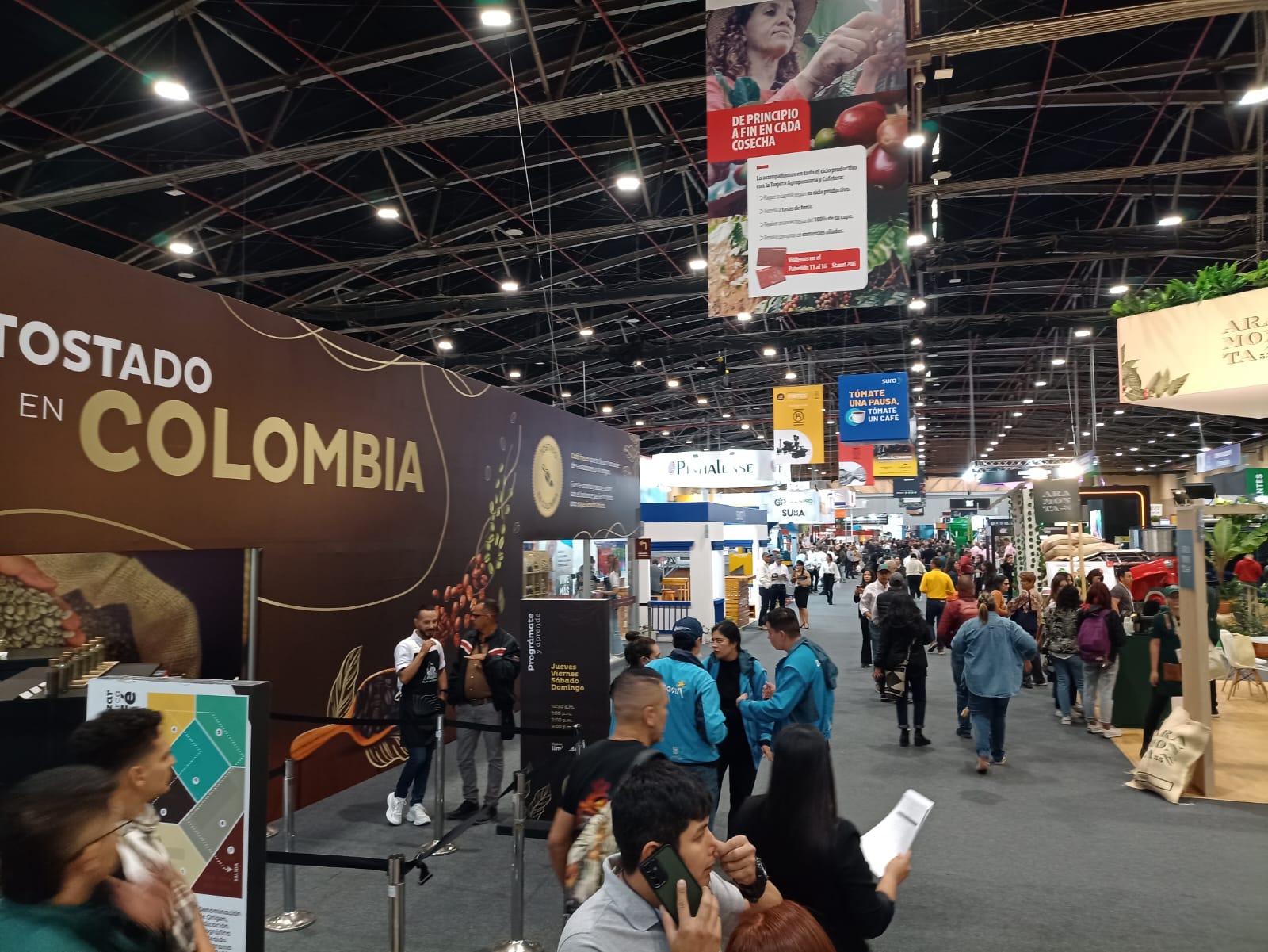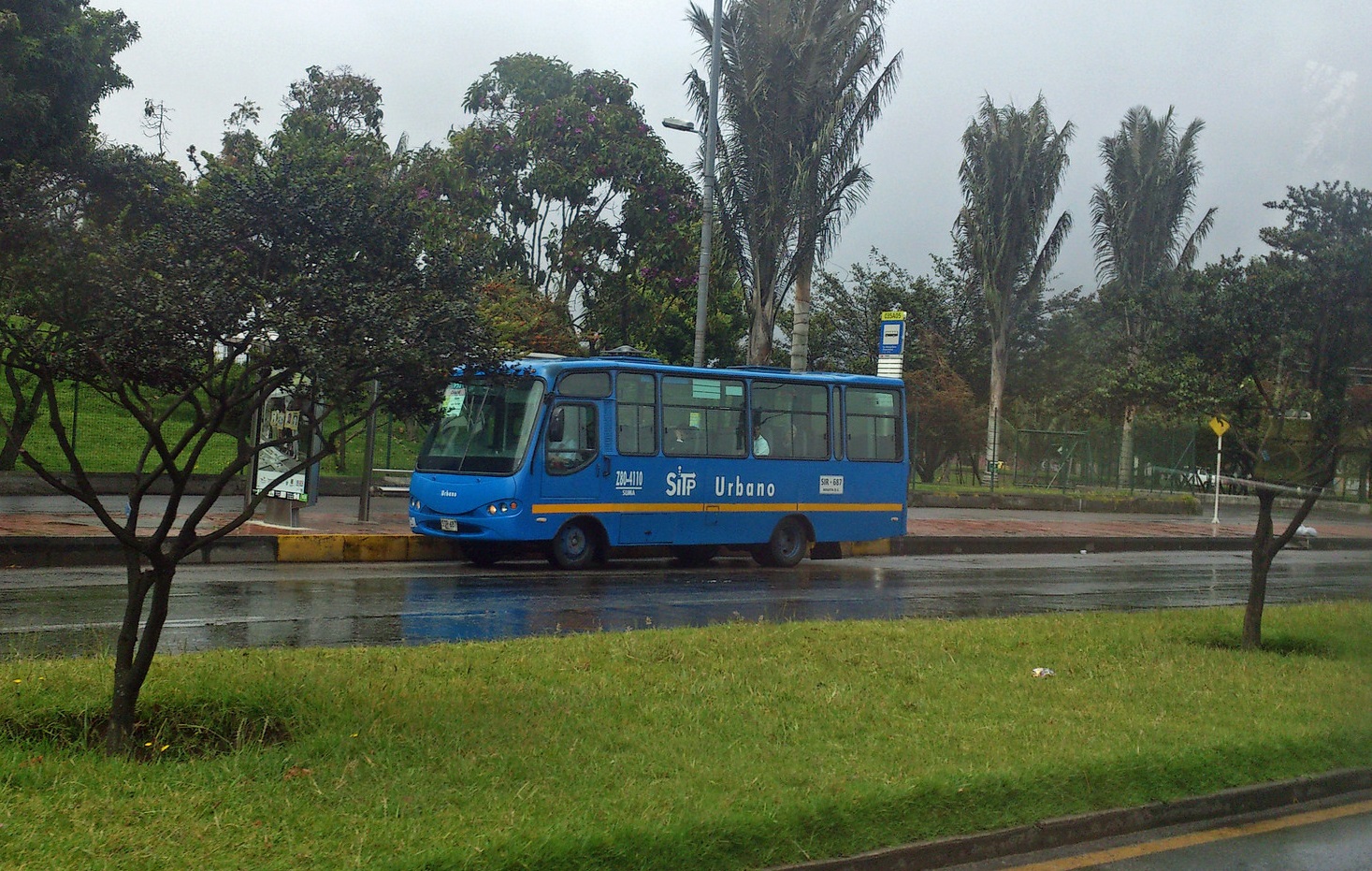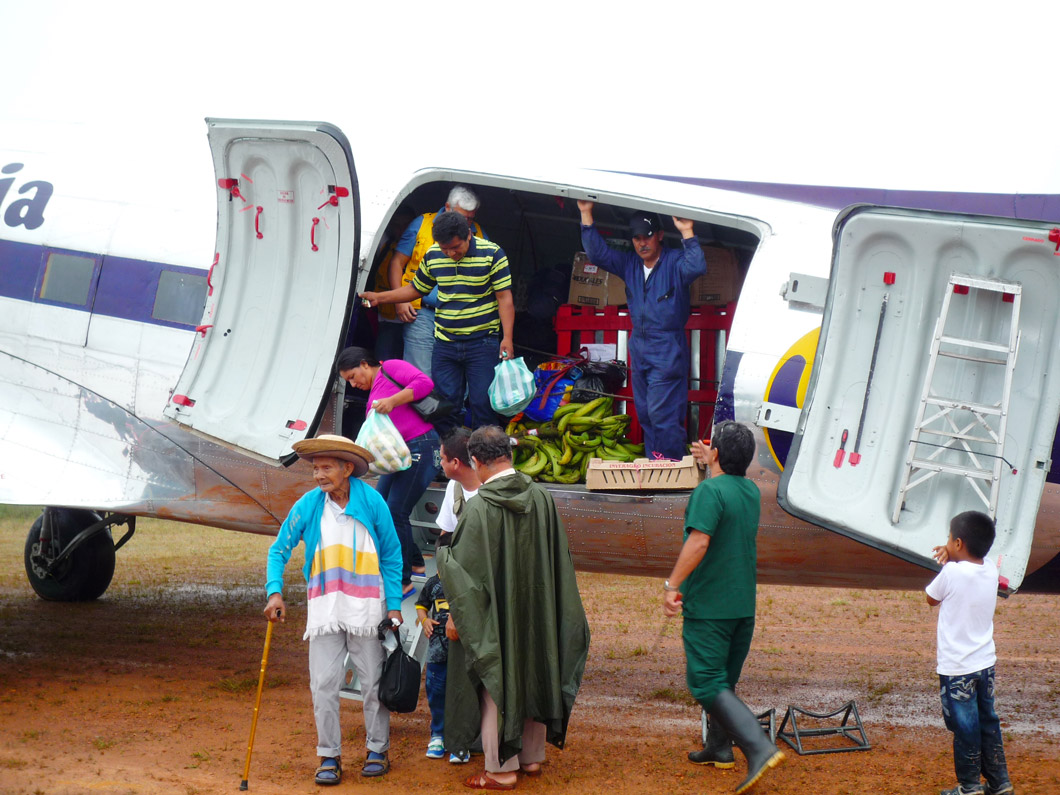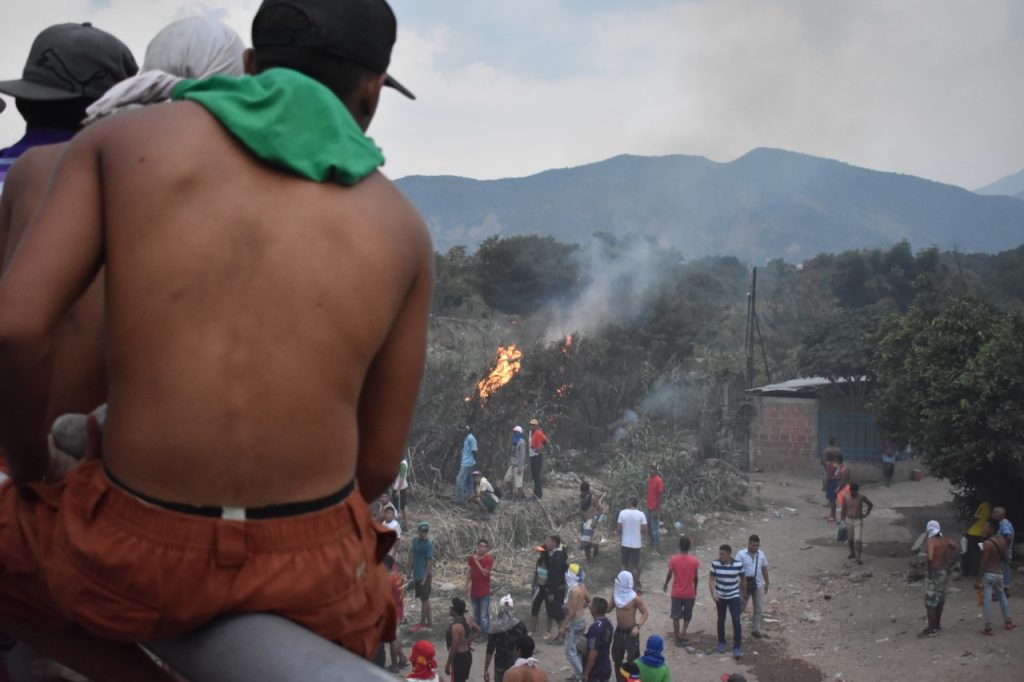
Saturday saw violent clashes between disaffected Venezuelans and the Venezuelan police on Simón Bolivar bridge in Cúcuta, Colombia. The Bogotá Post’s Arjun Harindranath was at the bridge to cover the day’s heated events.
Warning: This article contains graphic images and video that may disturb some readers.
Marielis Rosale had had enough. She had had enough of crossing the Simón Bolivar bridge every week to buy insulin for her sister. She had had enough of having to choose between being healthy and going hungry. She had had enough of seeing hospitals without healthcare and shops without food. And she had had enough of hearing that someone in the family had died because she lived in a country–one of the most resource-wealthy in the world– that had been criminally mismanaged.
Which is why yesterday when Marielis Rosale walked the same bridge that gives her diabetic sister a fighting chance, she decided that enough was enough.
Leading the charge at 6am, she was among the first to challenge the police wall that had formed on the Venezuelan side of the bridge. Walking directly towards the cordon of armed policemen that wore helmets and bore shields, Marielis Rosale confronted them with a singular plea: “Let us through! Let the aid through!”
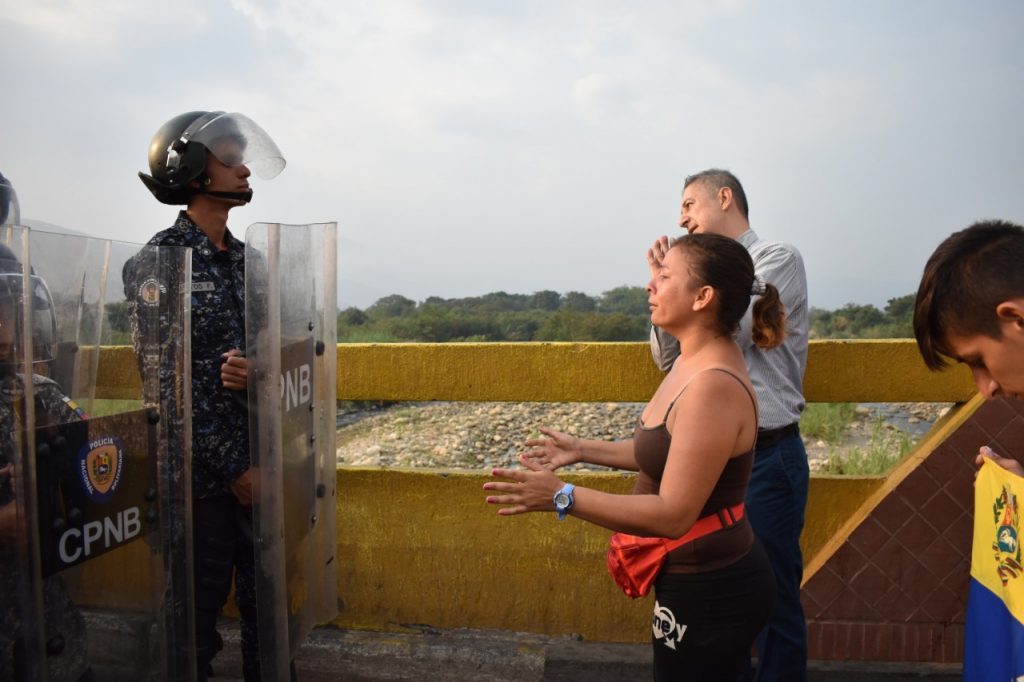
And with that, Marielis Rosale and a small group of men had kickstarted a day of protest with frenzied, dramatic scenes in the border city of Cúcuta.
The day itself had started with some confusion after Colombian authorities on the bridge initially said that the border was open, despite orders from Venezuelan President Nicolás Maduro that it be closed on the Venezuelan side.
Eyewitness reports stated that some people had in fact been able to pass through in both directions but that the first people to arrive in Venezuela had been met with two tanks of the Venezuelan National Guard (GNB).
More remarkably, it was said that the tanks were driven by defectors of the Maduro regime and that they had rammed the border barricades in the hope of escaping to the other side. Although these reports are as yet unconfirmed by Colombian migration authorities, there is currently video confirming the presence of GNB tanks on the bridge yesterday morning.
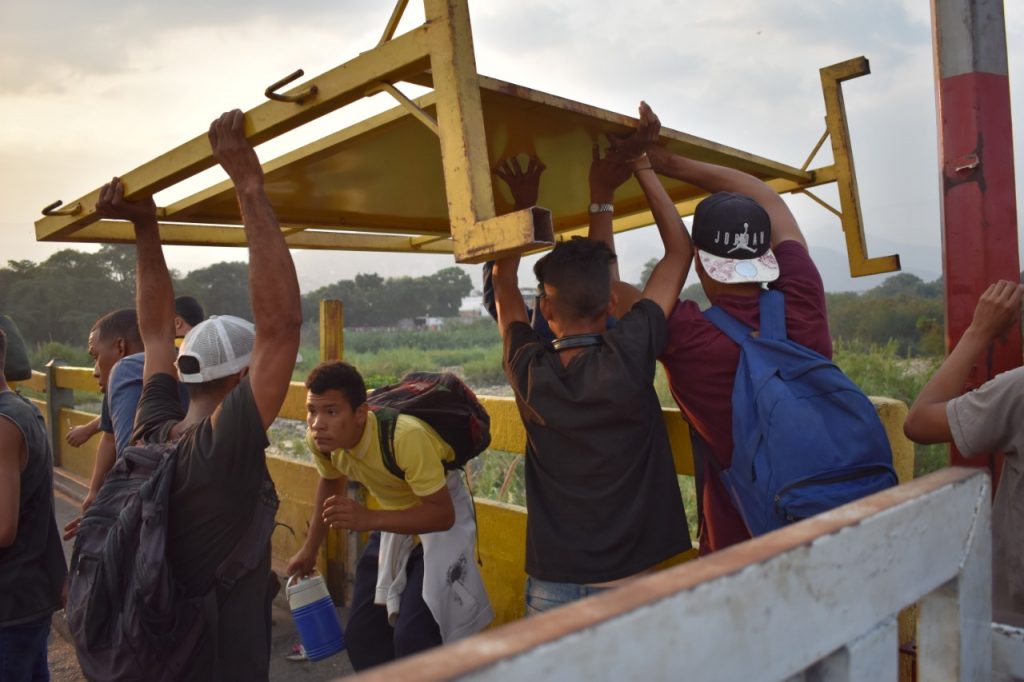
It is also said that this led to the first violent incident of the day after which the Colombian authorities were only permitting Venezuelans and the press onto the bridge. By now, however, the Venezuelan police had formed a wall and the first protesters of the morning began to dismantle the yellow barricades separating Venezuela from Colombia and throwing it over the bridge into the Táchira river.
However, despite these early dramatic scenes, what followed was a period of quiet; a lull whereby protesters spoke directly to the police in an attempt to persuade them to stand down, reminding them that they too have fathers, mothers, sisters and brothers that were hurting.
They reminded the policemen, who remained stoically silent, that they stood between Venezuela’s dystopian present and the hopeful future. Sometimes pleading, sometimes taunting, the one-way dialogue between the two parties ranged from cariñoso to cruel; from offensive to conciliatory; from love to hate.
It was a period that defused some of the earlier tension and allowed enough breathing space for the protest movement to gather momentum and for the large press corps to apply sunscreen and prepare for what was to come.
Iraida Ribeiro was hopeful of what was going to transpire. “I saw one of the policemen crying,” she said, standing directly within earshot of the phalanx of Venezuelan officers. “I’m sure that when the humanitarian aid arrives that the police will step aside. We have all suffered enough.”
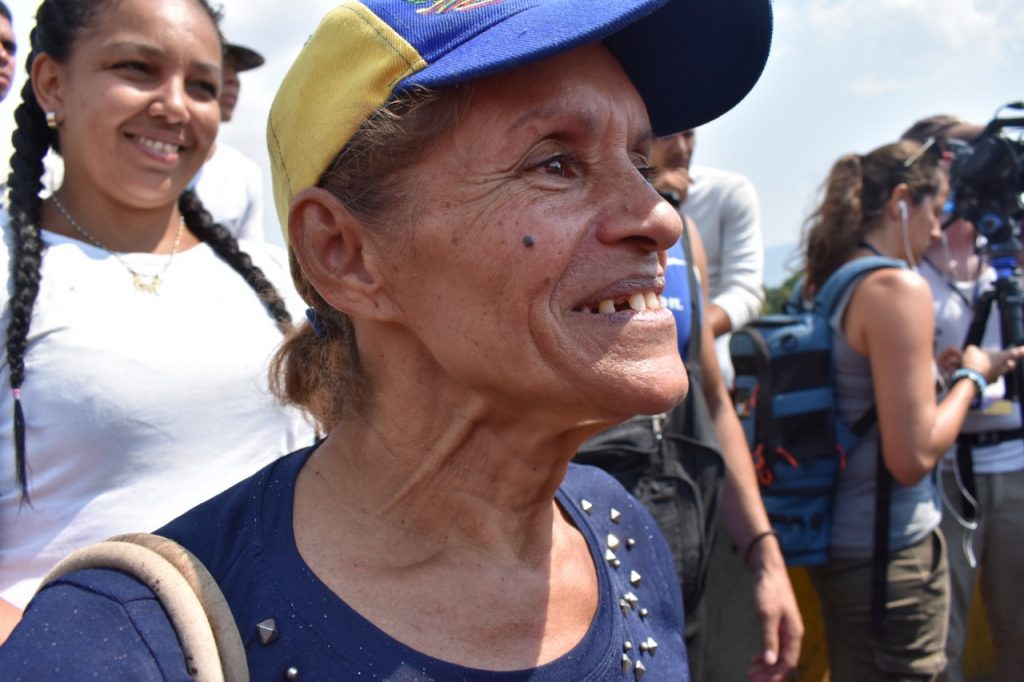
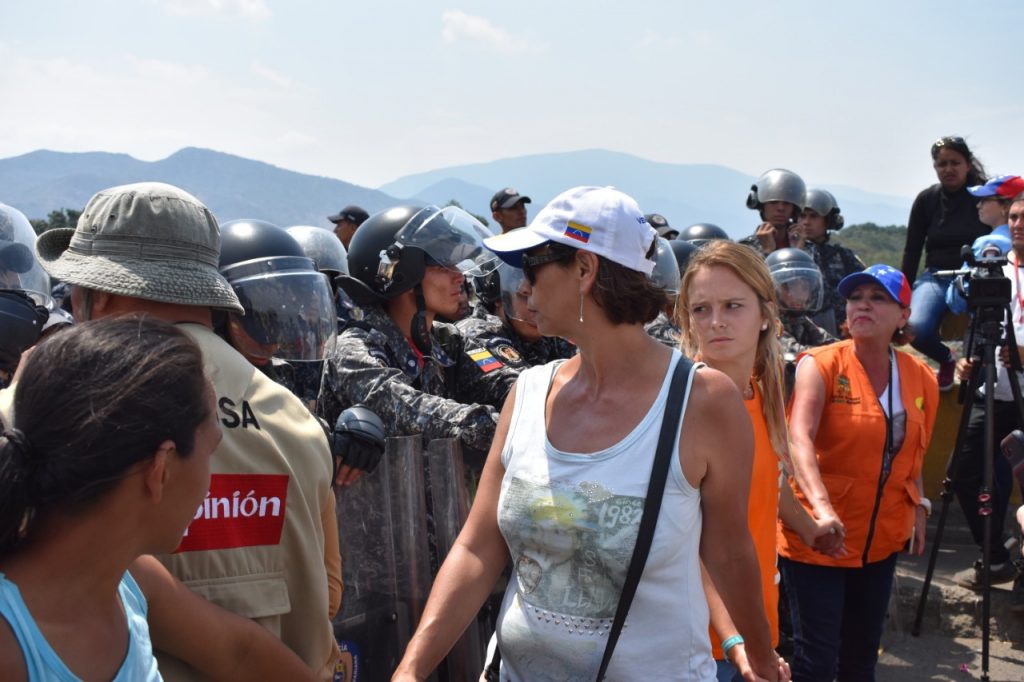
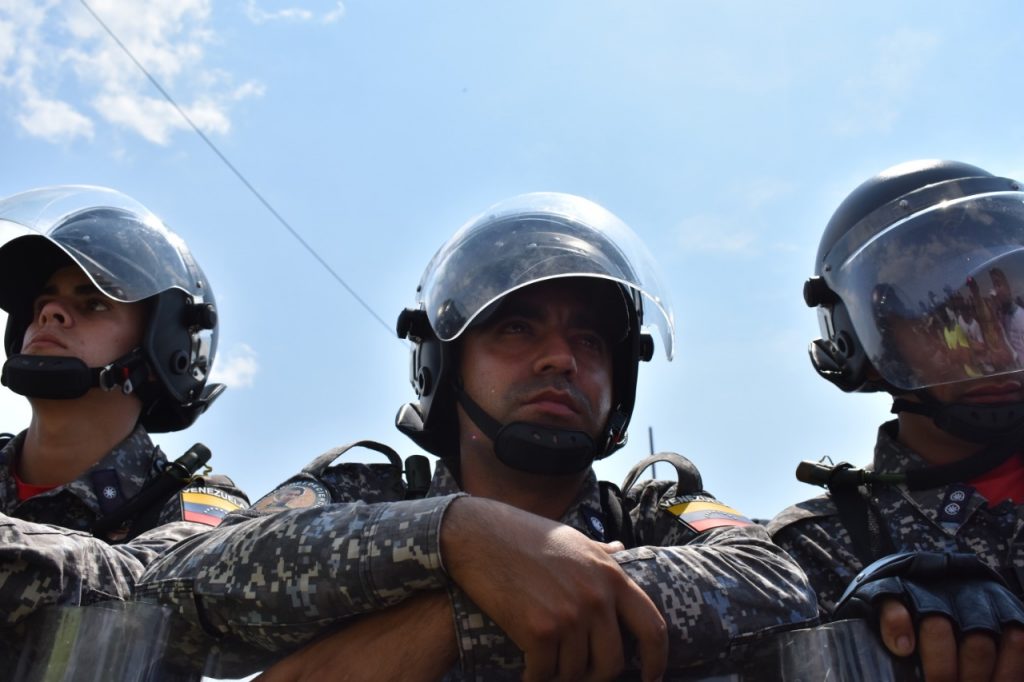
Iraida’s optimism was rare but, given the peaceful exercise that was taking place, it seemed plausible that perhaps the police would stand down and allow the aid to pass through. Behind the police wall awaited a larger informal group of colectivos–non-uniformed party loyalists—which many worried may be prepared to use more violence.
In the intervening period, the policemen and police women were serious but also cracked a few smiles, shared cigarettes and changed guard every now and then. As the sun bore down on Simón Bolivar, volunteers began to amass the crowds; a diverse group of adults of all ages.
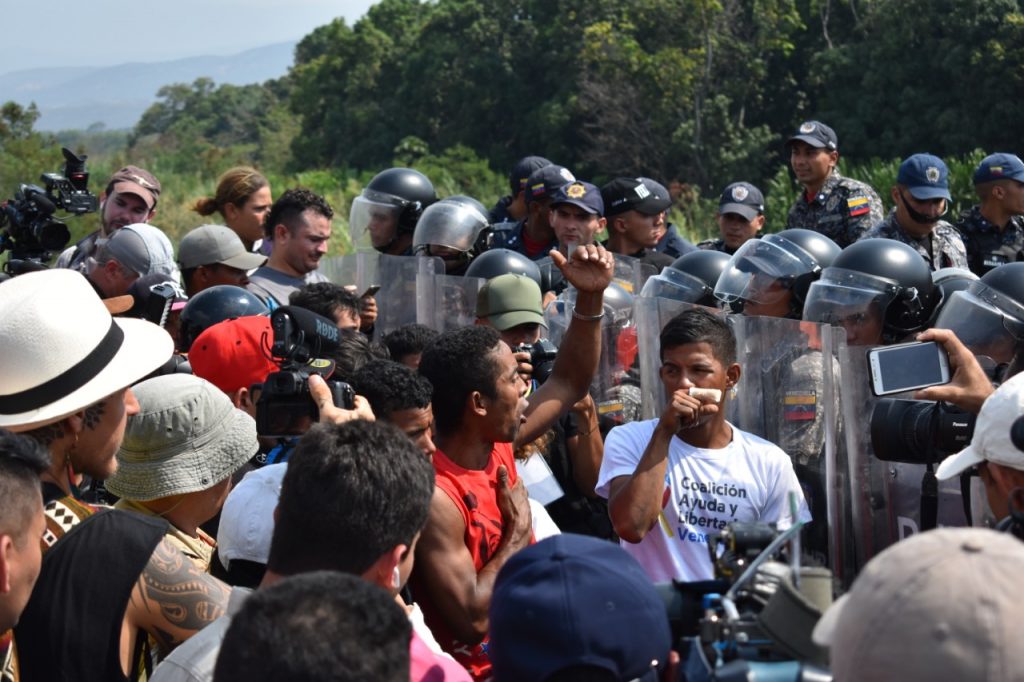
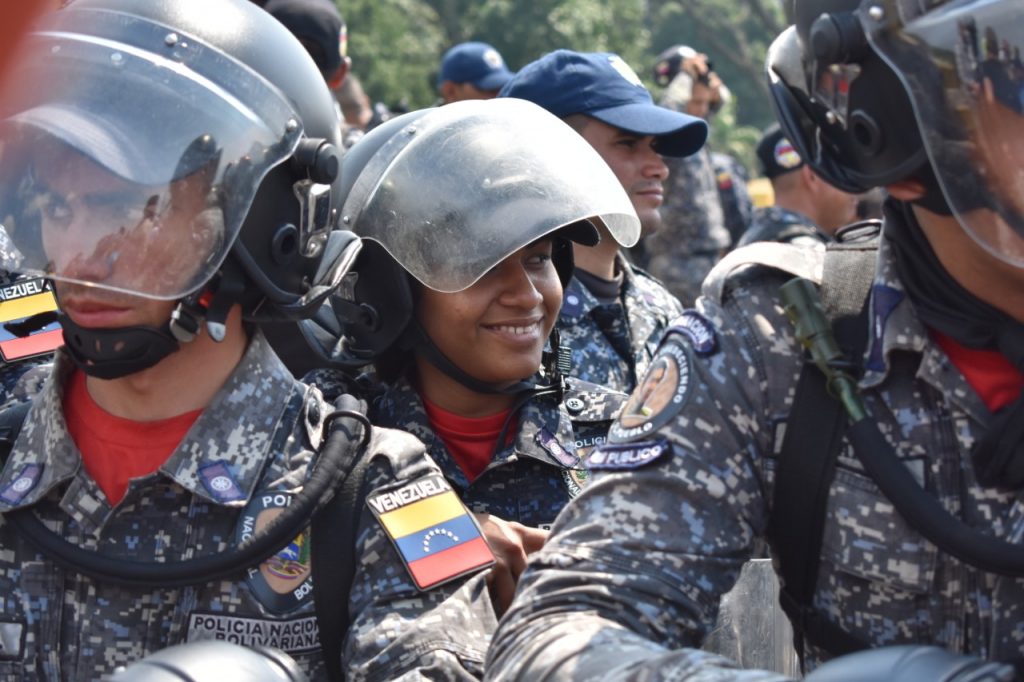
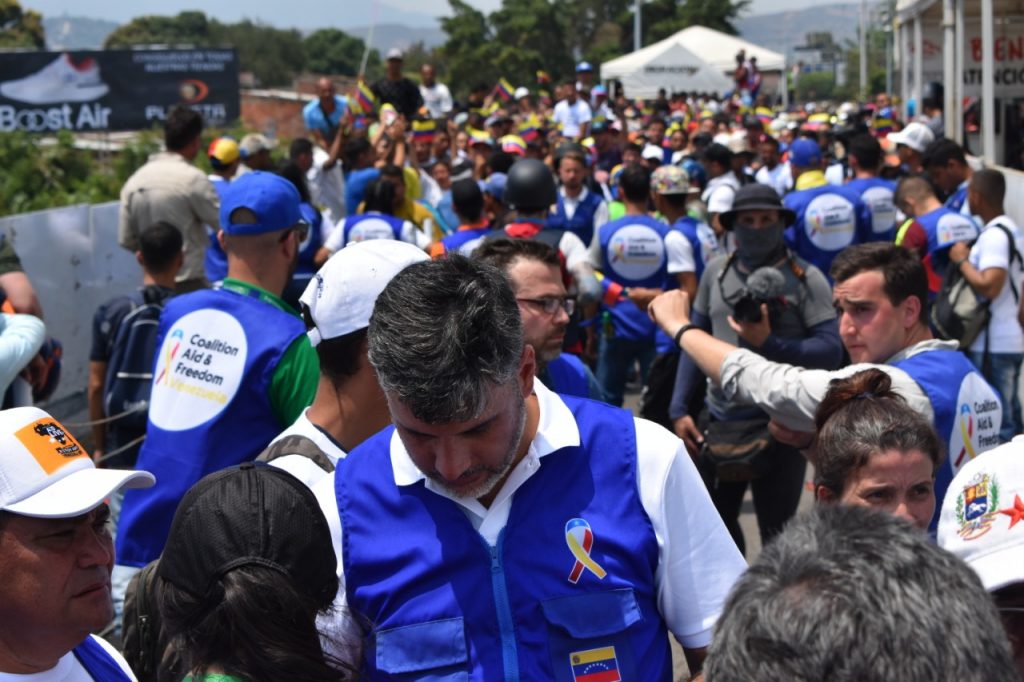
Word had got around that aid had passed through to Venezuela from Brazil, sending jubilant waves through the crowd and hope that this was the moment. As the time got closer to noon, they were ready to march towards the police in a formation that allowed for little to no room on the bridge.
Moments later it was the protesters who had tears in their eyes as Venezuelan riot police shot smoking gas cannisters into the crowd. The mass panic resulted in a stampede and, as there was only one direction to run in, resulted in many injuries.
Confusion reigned and misinformation spread. It turned out that aid hadn’t penetrated the Venezuelan border in Brazil despite opposition leader Juan Guaidó claiming it had. The fight wasn’t over. There were hours left in the day to resist and attempt to breach the border with aid. As trucks carrying the aid arrived around noon in a cavalcade of ecstasy, there were still hours of fighting left.
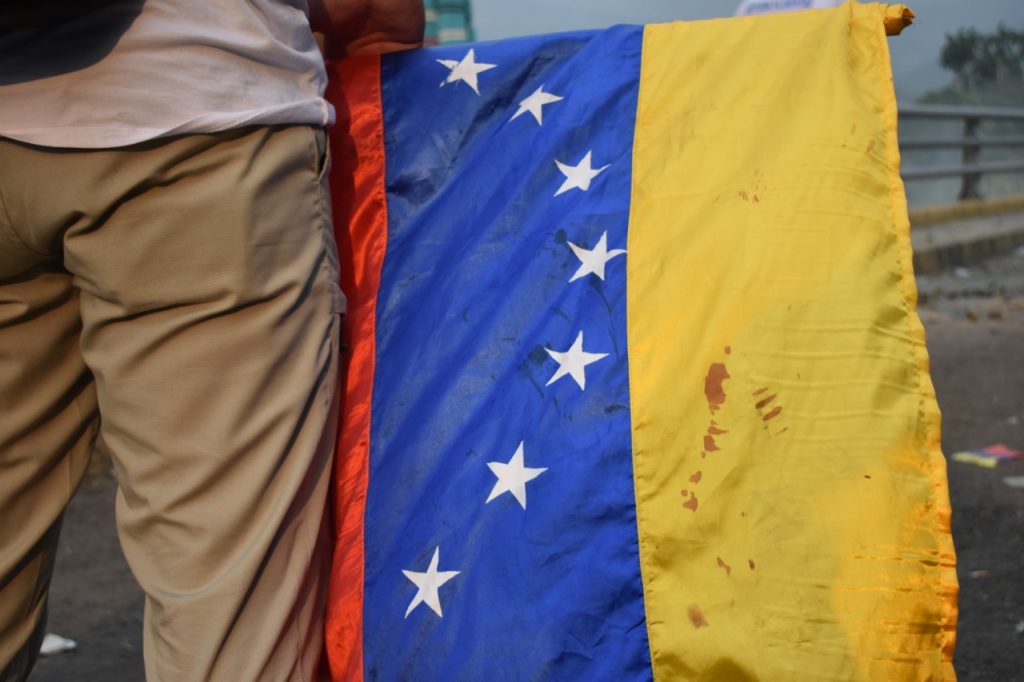
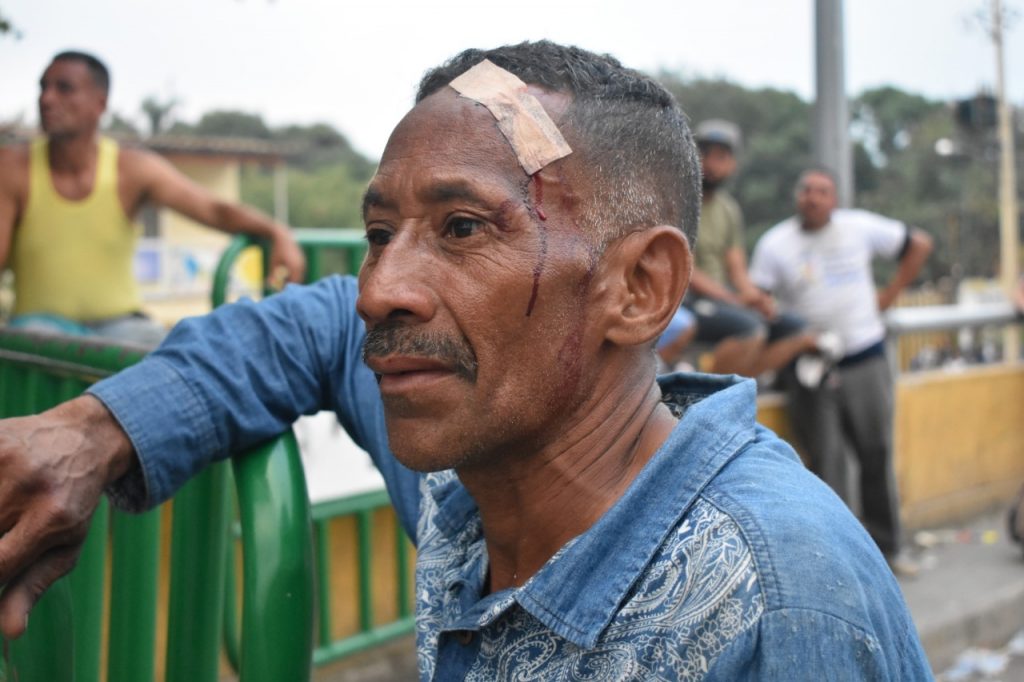
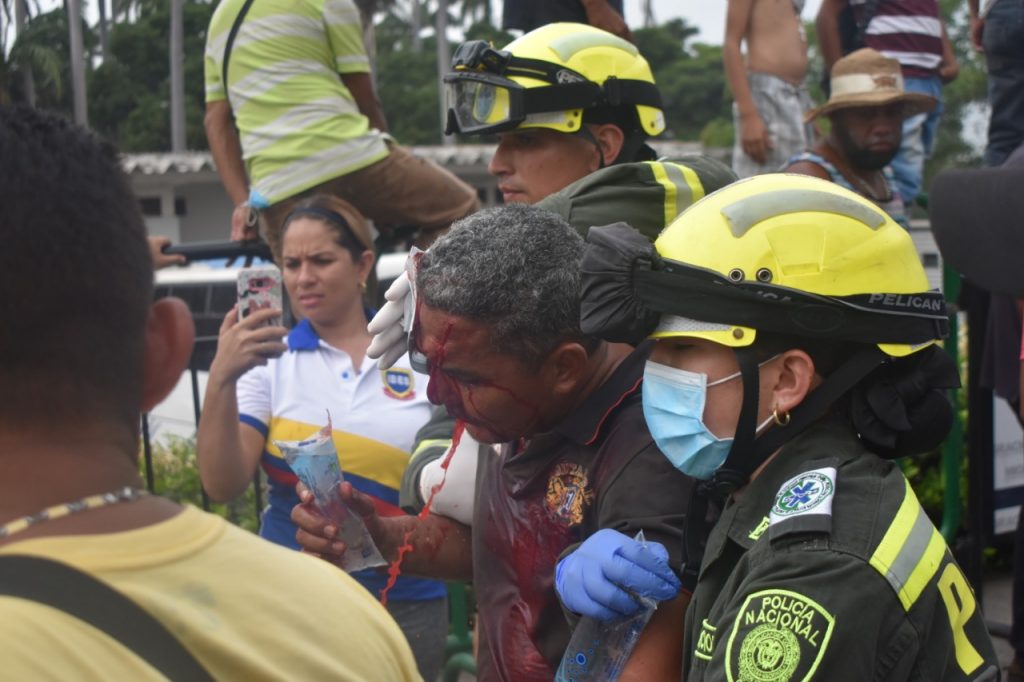
It didn’t take long for a pattern to develop. On the front lines, those with the most intensity began to take on the Venezuelan police. Further back the Colombian police would cordon off a space to allow for stampedes to freely run into. Behind them there was a reserve of thousands of protesters behind them as those in the front lines were pelleted with rubber bullets and more tear gas. The fog of war descended on Simón Bolivar bridge and the crowds began to spill onto the river bank of the Táchira.
In the afternoon, some protesters began to collect rocks along the river to pass on to those on the bridge to throw at the police. The ballistics were met with even more brutality by the Venezuelan police, taking to the faces and bodies of their countrymen with great force.
Every time a man was carried from the front lines to the back with a face smeared in blood the crowds would chant “Valiente! Valiente!” The Venezuelans that were being kept back from their own country, beaten and bruised, found firm allies in the Colombian police, who endured the tear gas and stampedes till the bitter end.
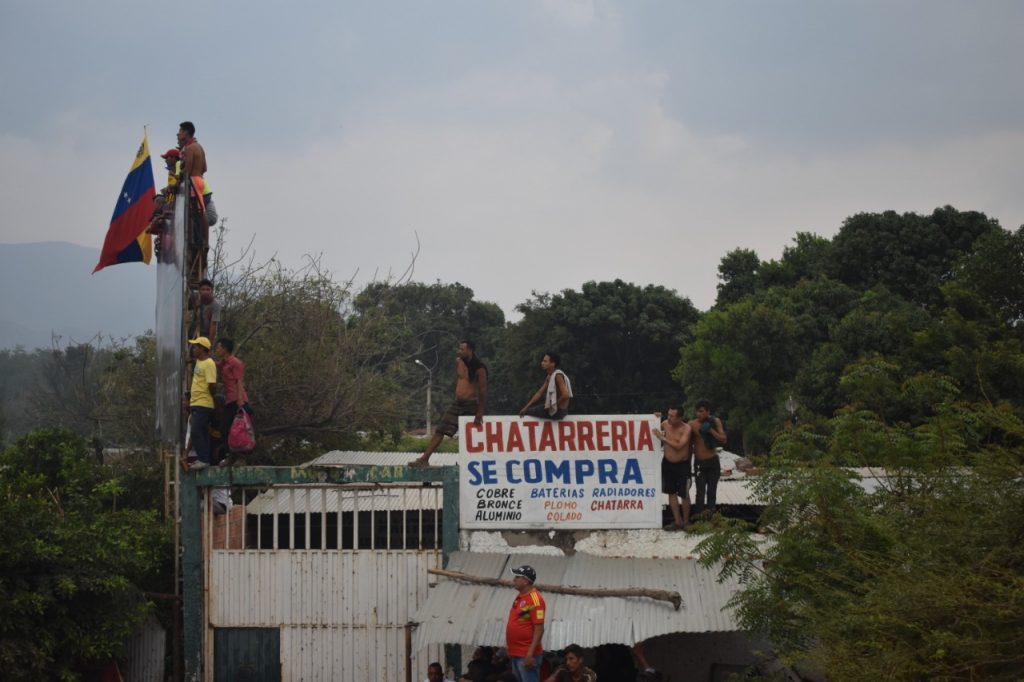
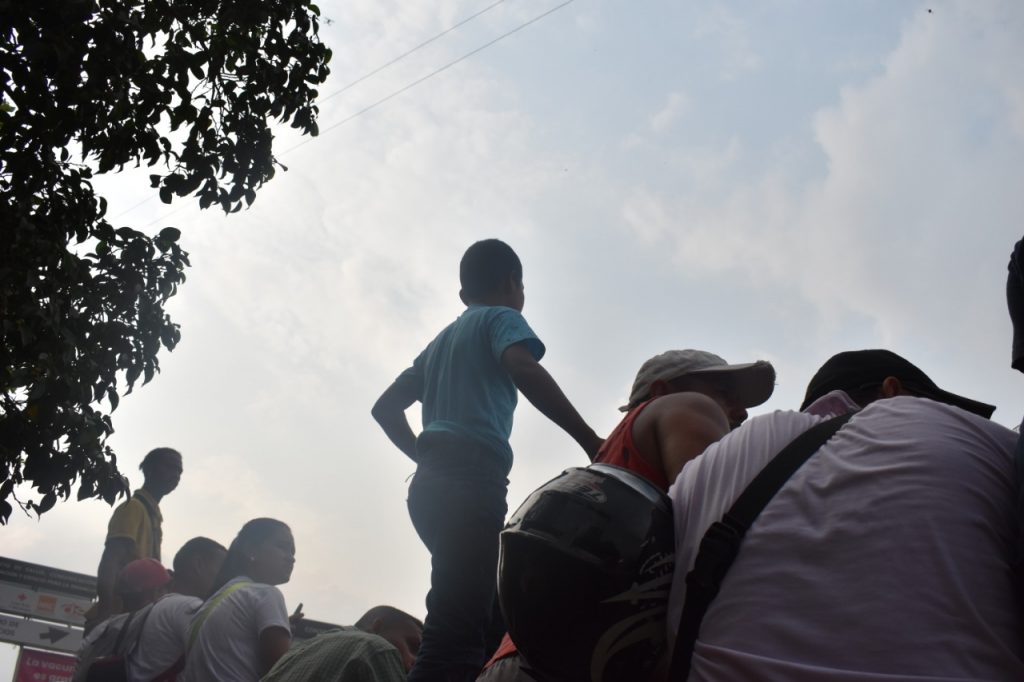
The final tear gas attack was enough to have everyone retreat to the Colombian side of the border again. When the fog cleared the consequences of the day became more clear. Around 300 had been injured during the day’s clashes that included violence at Francisco de Paula Sanander bridge in Cúcuta.
Remarkably, no one had died in the violent clashes in Colombia though it has been confirmed that two were killed in Santa Elena de Uairen, Brazil. Around 60 soldiers defected to Colombia, according to Colombian weekly Semana, but wasn’t enough to bring down the Venezuelan forces.
There were also uneasy political ramifications from the event. Venezuela had severed ties with Colombia. Guaidó, who played a largely absentee role in the day’s events, made an appeal to the international community to discuss “all possible options” on the table, raising the disturbing possibility of a war backed by the United States and Colombia.
Symbolically, their inability to get the aid through perhaps stung the movement the most. The revolution had been set alight, but so did the aid at one point as Venezuelan forces shot tear gas cannisters into the aid boxes at two border crossings.
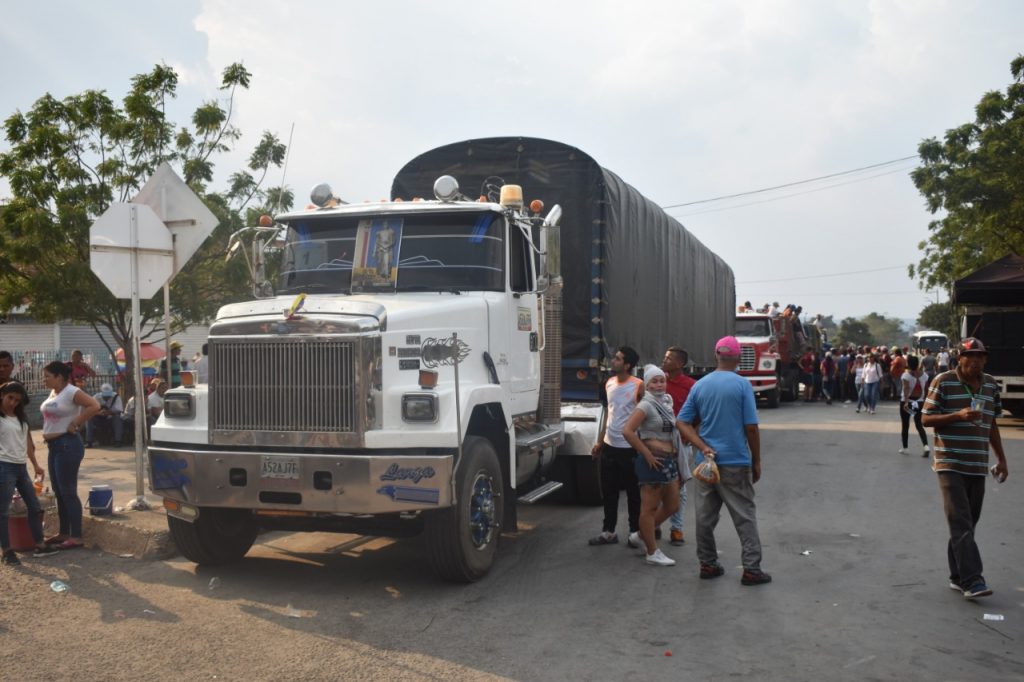
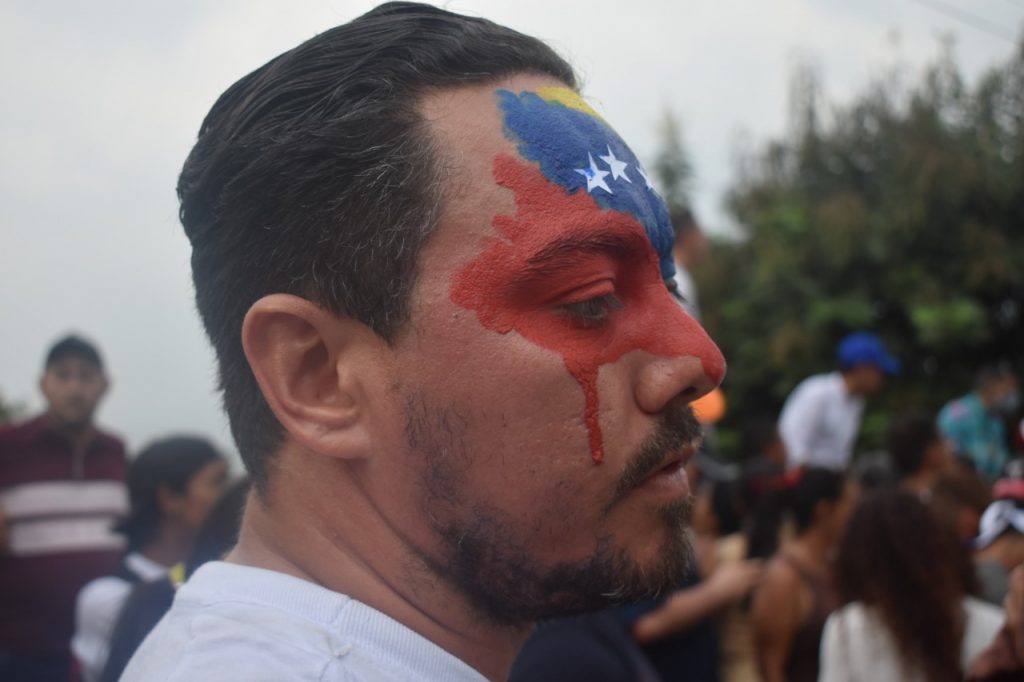
Dejected, many of Guaido’s supporters walked off feeling that they hadn’t done enough. Prior to Saturday’s violence, the sentiment was “February 23 or never” and many wondered if Maduro’s regime could ever fall given the spirited resistance they showed.
As for Marielis Rosale, she hadn’t heard of Guaidó’s intent to take more radical steps nor had she heard of the Colombian authorities’ decision to close the border until 26 February. Her face was the colour of leather having faced hours in the hot Cúcuta sun and her voice hoarse from the chanting and the tear gas.
As the night rain began to fall on those that had fought, Marielis had had enough for the day. She looked exhausted but not extinguished. She had lit the fire. She seemed certain what tomorrow would bring. “I’ll be back in the morning,” she said. “We have to be here.”
Photos and video by Arjun Harindranath

